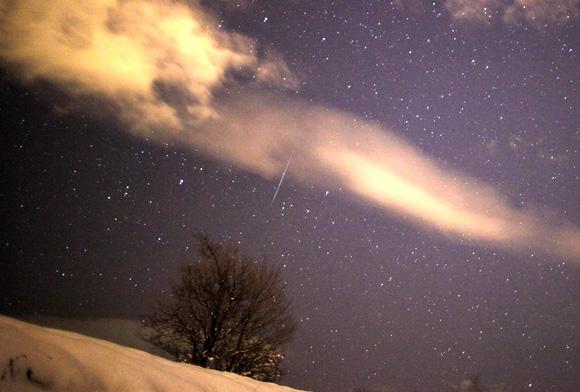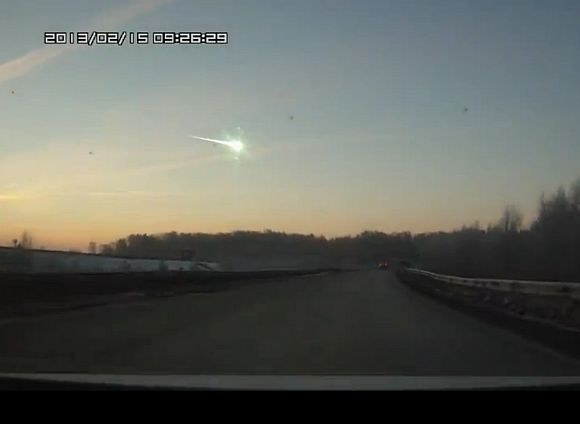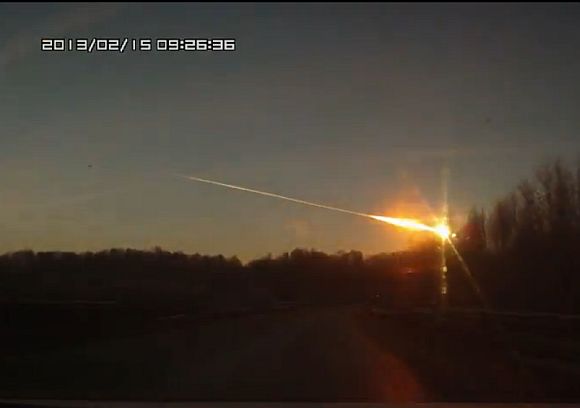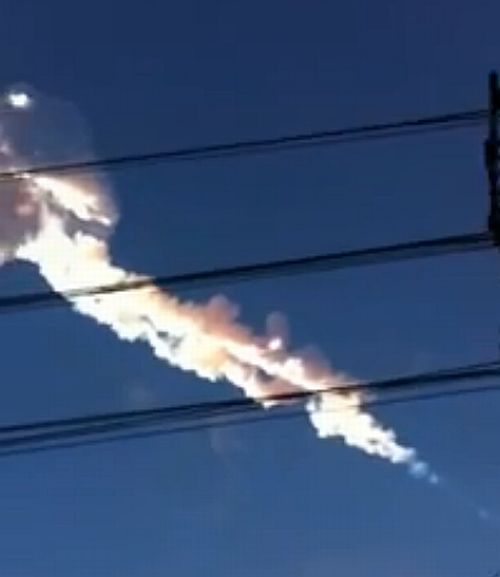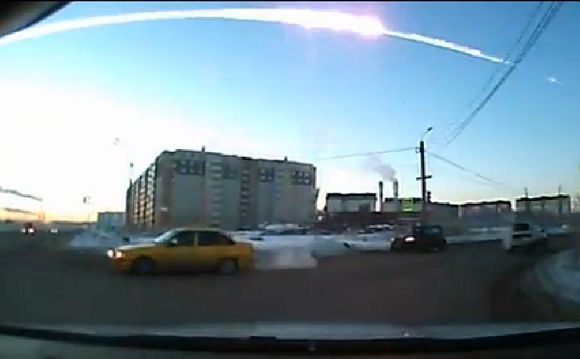 | « Back to article | Print this article |
IN PHOTOS: Meteor BLAST injures over 1200 in Russia
Around 1,200 people, including more than 200 children, were injured Friday when a meteor weighing about 10 tonnes streaked across the sky above Russia's Ural Mountains, creating panic as shockwaves blasted windows and rocked buildings.
The meteor entered the Earth's atmosphere at a hypersonic speed of at least 54,000 kph and shattered into pieces about 30-50 kilometers above the ground, the Russian Academy of Sciences said in a statement.
According to officials, around 1,200 people have sought medical attention in the disaster area, 112 of whom have been hospitalised, with two of them reported to be in "grave" condition. Among the injured there over 200 children.
Click on NEXT to read further...
IN PHOTOS: Meteor BLAST injures over 1200 in Russia
Most of those hurt suffered minor cuts and bruises but some received head injuries, Russian officials said.
Gas supplies were cut off to hundreds of homes in the Chelyabinsk region as a safety precaution and some 3,000 buildings were reported to have been damaged, Ria Novosti news agency quoted officials as saying.
A fireball was seen streaking through the clear morning sky above the city of Yekaterinburg, followed by loud bangs, but much of the impact was felt in the city of Chelyabinsk, some 200 km south of Yekaterinburg.
Click on NEXT to read further...
IN PHOTOS: Meteor BLAST injures over 1200 in Russia
President Vladimir Putin said he thanked God no big fragments had fallen in populated areas.
Putin also promised "immediate" aid for people affected, saying kindergartens and schools had been damaged, and work disrupted at industrial enterprises.
Russian space agency Roskosmos has confirmed the object that crashed in the Chelyabinsk region is a meteorite. They said in a statement, "According to preliminary estimates, this space object is of non-technogenic origin and qualifies as a meteorite. It was moving at a low trajectory with a speed of about 30 km/second."
Click on NEXT to read further...
IN PHOTOS: Meteor BLAST injures over 1200 in Russia
Asteroids are small bodies that orbit the Sun as the Earth does. Larger asteroids are called planetoids or minor planets and smaller ones are called meteoroids.
Russian Army units found three meteorite debris impact sites, two of which are in an area near Chebarkul Lake, west of Chelyabinsk. Police said an eight-meter wide crater had been discovered near the Chelyabinsk lake. The third site was found some 80 km further to the northwest, near the town of Zlatoust.
The meteor released several kilotons of energy above the region, the Russian science academy said. According to NASA, it was about 15 meters (49 feet) wide before it hit the atmosphere, about one-quarter the size of the passing asteroid.
Please click NEXT to read further...
IN PHOTOS: Meteor BLAST injures over 1200 in Russia
The European Space Agency said there was no link between the meteorite and the 2012 DA14 asteroid which is due to pass close by the Earth later on Friday. NASA also said there was no connection because the asteriod and the "Russian meteorite" are on "very different paths."
Russian Prime Minister Dmitry Medvedev, speaking at an economic forum going on in Siberia's Krasnoyarsk region, called the meteorite "a symbol of the forum."
"I hope that there will be no serious consequences, but it is a demonstration that it is not only the economy that is vulnerable, but our planet as well," he said.
